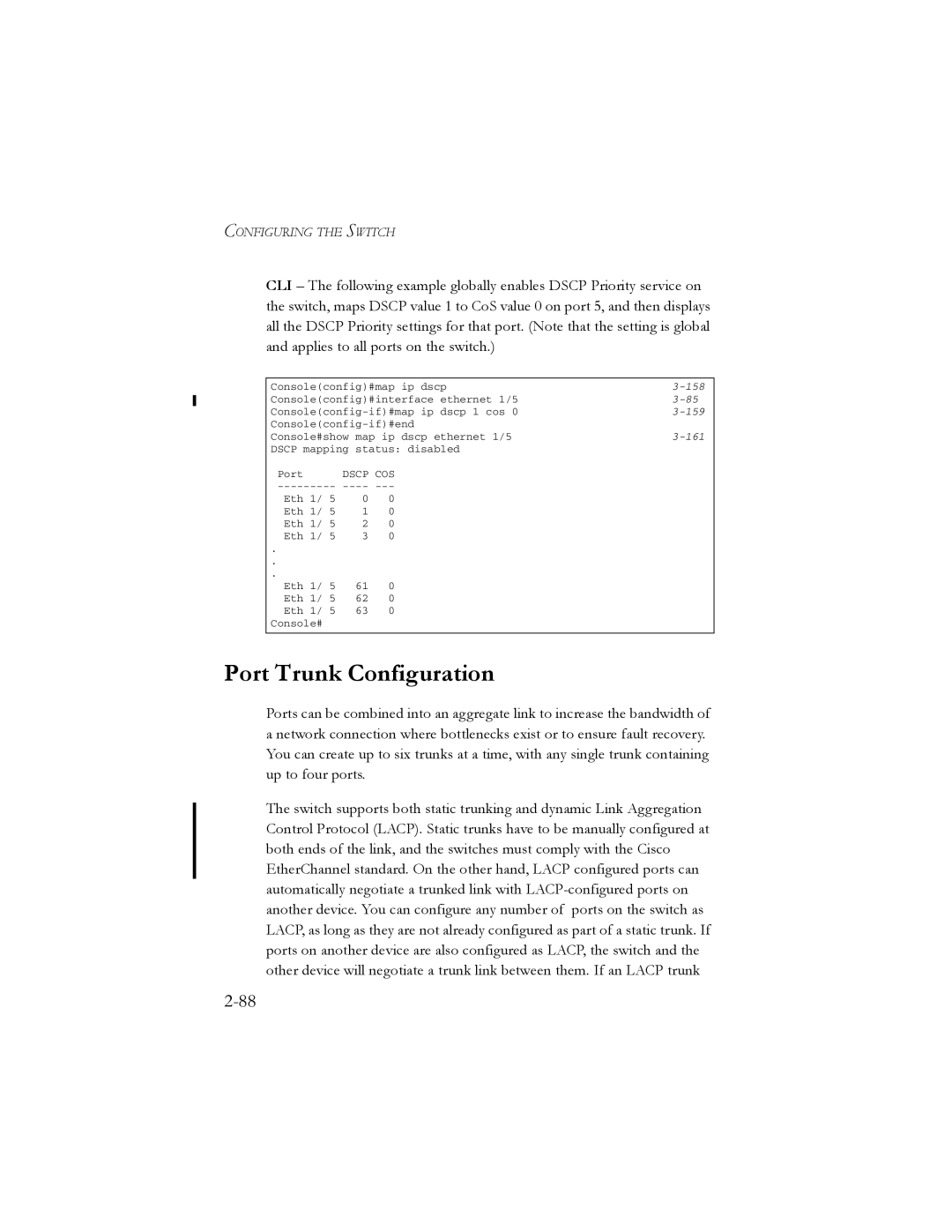CONFIGURING THE SWITCH
CLI – The following example globally enables DSCP Priority service on the switch, maps DSCP value 1 to CoS value 0 on port 5, and then displays all the DSCP Priority settings for that port. (Note that the setting is global and applies to all ports on the switch.)
Console(config)#map | ip dscp | |||
Console(config)#interface ethernet 1/5 | ||||
| ||||
Console#show map ip | dscp ethernet 1/5 | |||
DSCP mapping status: disabled |
| |||
Port | DSCP COS |
|
| |
|
| |||
Eth 1/ 5 | 0 | 0 |
|
|
Eth 1/ 5 | 1 | 0 |
|
|
Eth 1/ 5 | 2 | 0 |
|
|
Eth 1/ 5 | 3 | 0 |
|
|
. |
|
|
|
|
. |
|
|
|
|
. |
|
|
|
|
Eth 1/ 5 | 61 | 0 |
|
|
Eth 1/ 5 | 62 | 0 |
|
|
Eth 1/ 5 | 63 | 0 |
|
|
Console# |
|
|
|
|
|
|
|
|
|
Port Trunk Configuration
Ports can be combined into an aggregate link to increase the bandwidth of a network connection where bottlenecks exist or to ensure fault recovery. You can create up to six trunks at a time, with any single trunk containing up to four ports.
The switch supports both static trunking and dynamic Link Aggregation Control Protocol (LACP). Static trunks have to be manually configured at both ends of the link, and the switches must comply with the Cisco EtherChannel standard. On the other hand, LACP configured ports can automatically negotiate a trunked link with
